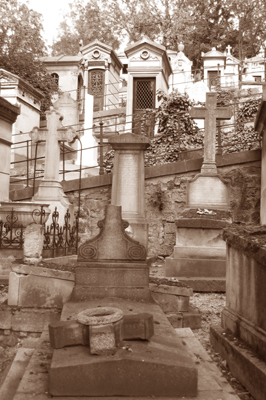A
Weekend in Paris 2006
|
| |
| |
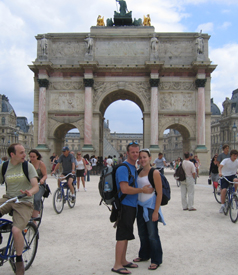
A
shot of Laurel and I outside The Louvre as we walked
toward
the Tuileries Gardens. |
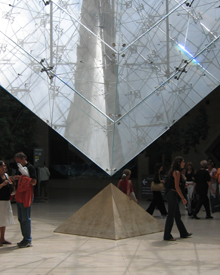
The
upside down pyramid inside the Louvre that was made reference to in The
Da Vinci Code. |
| |
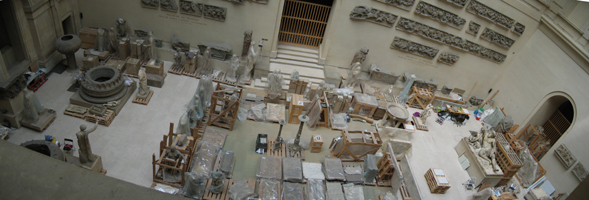
One
of the restoration workshops inside the Louvre and the only one that most
visitors will ever see. |
| |
|
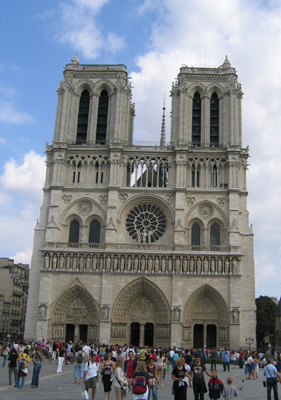 |
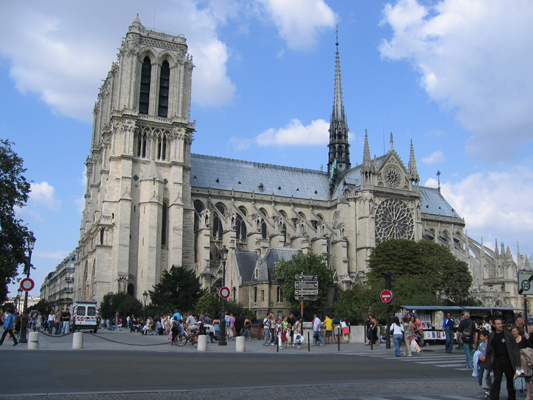 |
| Notre
Dam as seen on a summer day from both the front and the left side. |
| |
 |
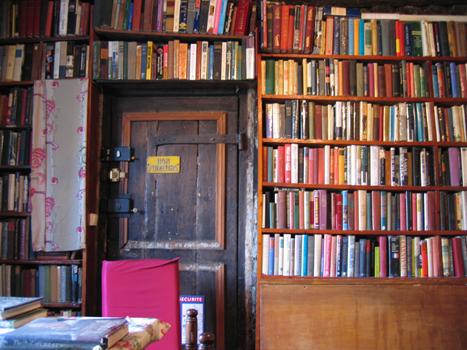 |
| My
favorite book store in the whole world: Shakespeare & Co. It is located
in the 5th arrondissement of Paris's Left Bank – just across from
Notre Dam. In addition to being a bookshop it is also a lending library,
specializing in English-language literature. The upstairs serves as a makeshift
dormitory for travelers, known as "tumbleweeds," who earn their
keep by working in the shop for a couple of hours each day – though
one has to be a published writer of considerable talent to live so cheaply...
The history of the shop (In a different location) began in 1917 with Sylvia
Beach, one of the leading American expatriate figures in Paris between World
War I and II. She was interned for six months during World War II, but kept
her books hidden in a vacant apartment upstairs at 12 rue de l'Odeon. The
shop was symbolically liberated by Ernest Hemingway in person in 1944 but
never re-opened in the original location. In 1951, American George Whitman
opened a bookshop using the name of Le Mistral. Much like its predecessor
the store was a focal point for literary culture in bohemian, left-bank
Paris serving as a base for many of the writers of the beat generation like
Allen Ginsberg, Gregory Corso and William Burroughs. Upon Sylvia Beach's
death, the store's name was changed to Shakespeare & Co. Whitman's daughter,
Sylvia, now runs the shop. |
| |
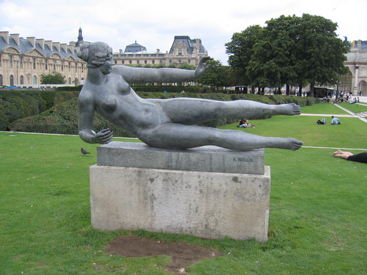
One
of the many statues in the Tuileries Gardens. |
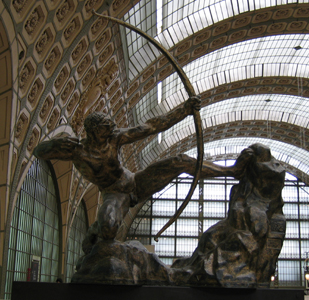
“The
Archer” in the Muse d’Orsay. The d’Orsay is an amazing
place if one is into Impressionist and Post-Impressionist art and furnishings. |
| |
|

The
Eiffel Tower at night. Once an hour it puts on a light display that is
amazing and the best view is from the platform of The Tracadero. |
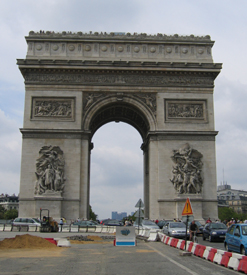
The
Arc de Triomphe, at the head of Avenue de Champs Elysees, where we found
$10 Chapstick, $7 Coke-Cola, and $35 crepes. NEVER, EVER eat on the Champs
Elysees! |
| |
|
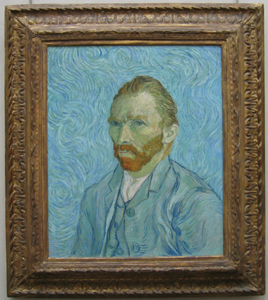
No
trip to Paris would be complete without a viewing of a Van Gogh. This
is one of his more famous Self-portraits in the Muse d’Orsay. |
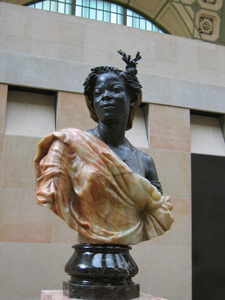
Marble
on Bronze. There are three of these pieces in the main gallery of the
d’Orsay and each is amazing in detail. Notice how the colors of
the stone make a perfect pattern for her shawl… |
| |
|
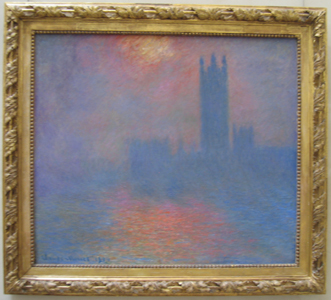
A
print of Monet’s Londres, le Parlement… is beautiful, but
the original is both spooky and stunning. |
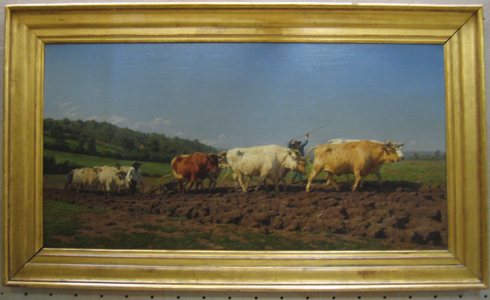
This
is another piece from the d’Orsay. It was painted n 1849 by Rosa
Bonheur and is a huge piece, maybe four feet tall and ten feet wide. It
was very detailed, which you can see if you click on the image. |
| |
|

One
of the tour boats on the Seine as it flows near Notre Dam. |
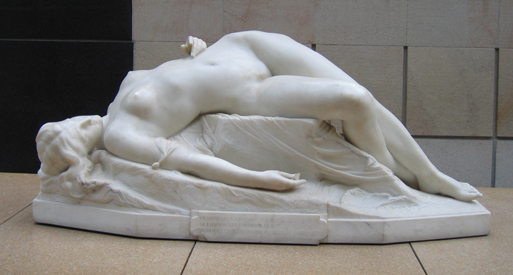
This
marble statue was carved in 1871 and is so detailed that it looks as if
the figure could, at any moment, take a breath, rise up, and walk away.
|
| |
|
|
| The
tombs at Pére Lachase Cemetery line the “avenues” of
the City of the Dead as if they were ornate office buildings. Narrow paths
wind their way around and through marble, granite, and cement tombs that
have stood for hundreds of years and even the most decrepit and fallen in
among them has a certain beauty. Many of the tombs have altars and stained
glass windows that allow light into their interiors. In addition to the
ornate stone carvings, the grounds are littered with bronze figures coated
in a protective patina of green and black. The coloring only dramatized
the grief, cast into the faces of the statues a century or more ago, for
the dead which they stand guard above. |
| |
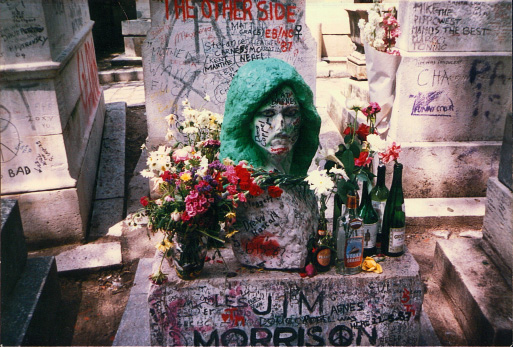 |
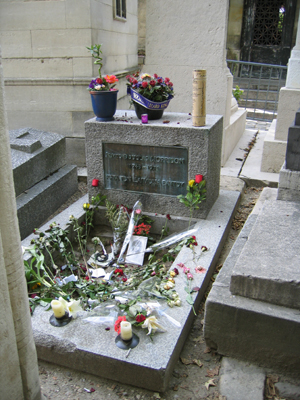 |
| A
picture of what Jim Morrison’s headstone looked like (Left) before
it was stolen by thieves and a shot of his grave in 2006 (right). The bottles
of wine, candles, mementos of fan worship, and flowers remain, but the graffiti
covering the walls of the tombs around his have all been cleaned up. |
| |
|
| |
France
2002
|
| |
|
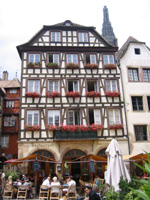 |
A
timber frame house in Strasbourg near the cathedral. The bottom floor is
a restaurant with stone arch doorways. |
| |
|
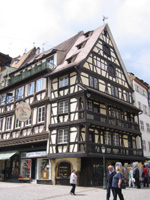 |
A very
large timber frame multi-family house with funky little balconies and dormers.
Shops are located on the ground floor. |
| |
|
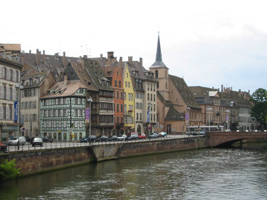 |
A view
of some of the homes and buildings on the bank of one of the canals. |
| |
|
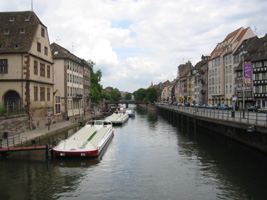 |
Looking
down the length of a Strasbourg canal on a beautiful sunny day. |
| |
|
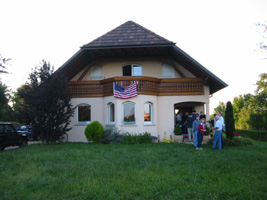 |
A coworker’s
house in Mulhouse during a 4th of July party. All of the Americans at Jet
Aviation and their significant others were there along with maybe 15
Brits, 25 Frenchmen, and 5 or 6 Germans. Good times! |
| |
|
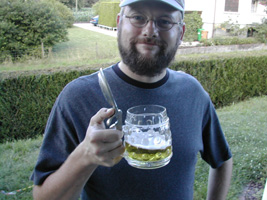 |
One
of the Germans at the party brought his own crystal and pewter stein to
drink out of. |
| |
|
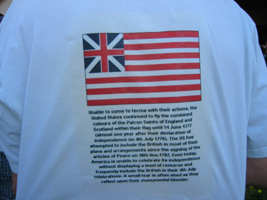 |
All
of the Brits got together before the party and had shirts made for the event.
They read: “Unable to come to terms with their actions, The United
States continued to fly the combined colours of the Patron Saints of England
and Scotland within their flag until June 1777 (almost one year after their
declaration of independence on 4th July, 1776). The US has attempted to
include the British in most of their plans and arrangements since the signing
of the Articles of Peace on 30th Nov. 1782. Even today, America is unable
to celebrate its independence without displaying a level of remorse and
frequently include the British in their 4th July celebrations. A small tear
is often shed as they reflect on their monumental blunder.” I love
the Brits. |
| |
|
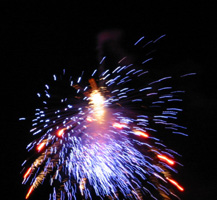 |
Fireworks
the night of the party. |
| |
|
 |
The
alter of the cathedral in Strasbourg. |
| |
|
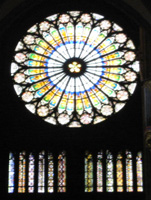 |
One
of the stained glass windows above the front doors. |
| |
|
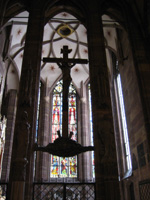 |
| |
|
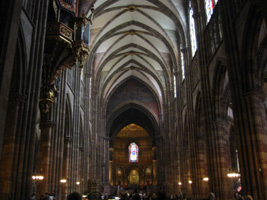 |
The
central archway in the middle of the cathedral. |
| |
|
 |
Stained
glass. |
| |
|
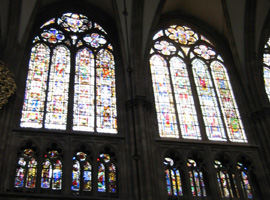 |
Stained
glass. |
| |
|
 |
The
clock in the Strasbourg cathedral is two stories high, is incredibly ornate
& beautiful and apparently it keeps marvelous time as well. The man
who built the clock did such an outstanding job that he was rewarded with
a death sentence... Apparently, it was so breathtaking at the time, that
it was decided that it might be better to send him to the promised land
so that he couldn’t built something like it or better somewhere else. |
| |
|
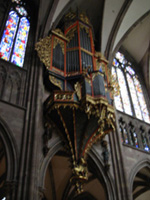 |
A view
of the high pulpit |
| |


















